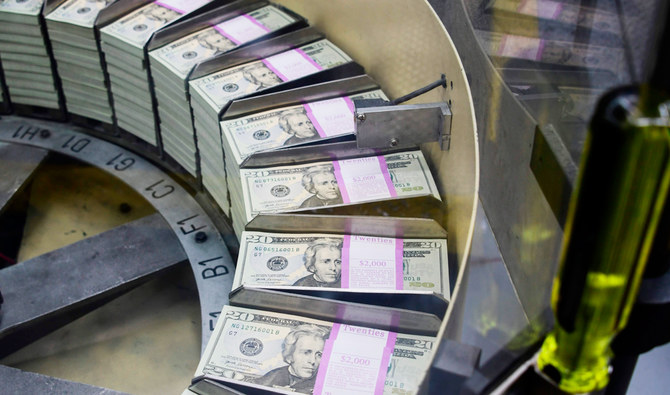TOKYO: The dollar was on the defensive against most currencies on Friday after a rise in US jobless claims and a dip in Treasury yields dampened the appeal of holding the greenback.
The yuan jumped to a seven-month high against the dollar, showing that even US-Sino diplomatic tension was not enough to deter traders who are bullish on China’s economic outlook.
The euro, which has been the biggest beneficiary of a recent decline in the dollar, will come into focus later on Friday as traders brace for euro zone manufacturing data.
A larger-than-expected rise in weekly US jobless claims came just one day after Fed officials warned that a recovery in hiring is starting to slow, raising doubts about how quickly the world’s largest economy will bounce back from the coronavirus.
Concern about the US economy, combined with an excess supply of dollars already in circulation due to the Fed’s massive quantitative easing, are likely to weigh on the US currency in coming weeks, analysts say.
“Sentiment for the dollar is weak, reflecting all the QE and the decline in real US yields,” said Tsutomu Soma, a credit trader at Monex Securities.
“On the flip side, the euro is strong because Europe has already put a firm backstop in place to support economic growth, which has boosted confidence in the euro and euro zone bonds.”
The dollar fell slightly to $1.1874 per euro on Friday following a 0.2 percent decline in the previous session.
The British pound edged up to $1.3237, holding onto a 0.8 percent gain made on Thursday.
The dollar also nursed losses against the safe harbor Swiss franc, last trading at 0.9077 on Friday.
The onshore yuan rose to 6.8960 per dollar, the highest since Jan. 22. Offshore, the yuan briefly hit 6.8935, its strongest since Jan. 21.
China’s currency has recovered all of its losses since the central Chinese city of Wuhan, where the coronavirus first broke out, was first put on lockdown.
The greenback was quoted at 105.72 yen after a 0.3 percent decline on Thursday.
The number of Americans filing new claims for unemployment benefits unexpectedly rose back above the 1 million mark last week, data showed on
Thursday in a setback for a US job market that has been crippled by the coronavirus pandemic.
A slight decline in Treasury yields was another factor working against the greenback.
The dollar index against a basket of six currencies was on course for its ninth consecutive weekly decline.
Sentiment for the dollar and risk assets like equities had already taken a hit after dovish minutes from the Fed’s most recent meeting, which were released on Wednesday.
The growing consensus is the euro will continue to edge higher because European governments have taken decisive action on a string of stimulus measures to support growth.
In comparison, US Republicans and Democrats are still at loggerheads over additional economic stimulus, which analysts said is another reason to favor the euro over the dollar.
Elsewhere in currencies, the Australian dollar held steady at $0.7202, while the New Zealand dollar bought $0.6536 as the country’s prime minister deferred until Monday a decision on whether to ease a coronavirus lockdown on Auckland.
Reuters






















